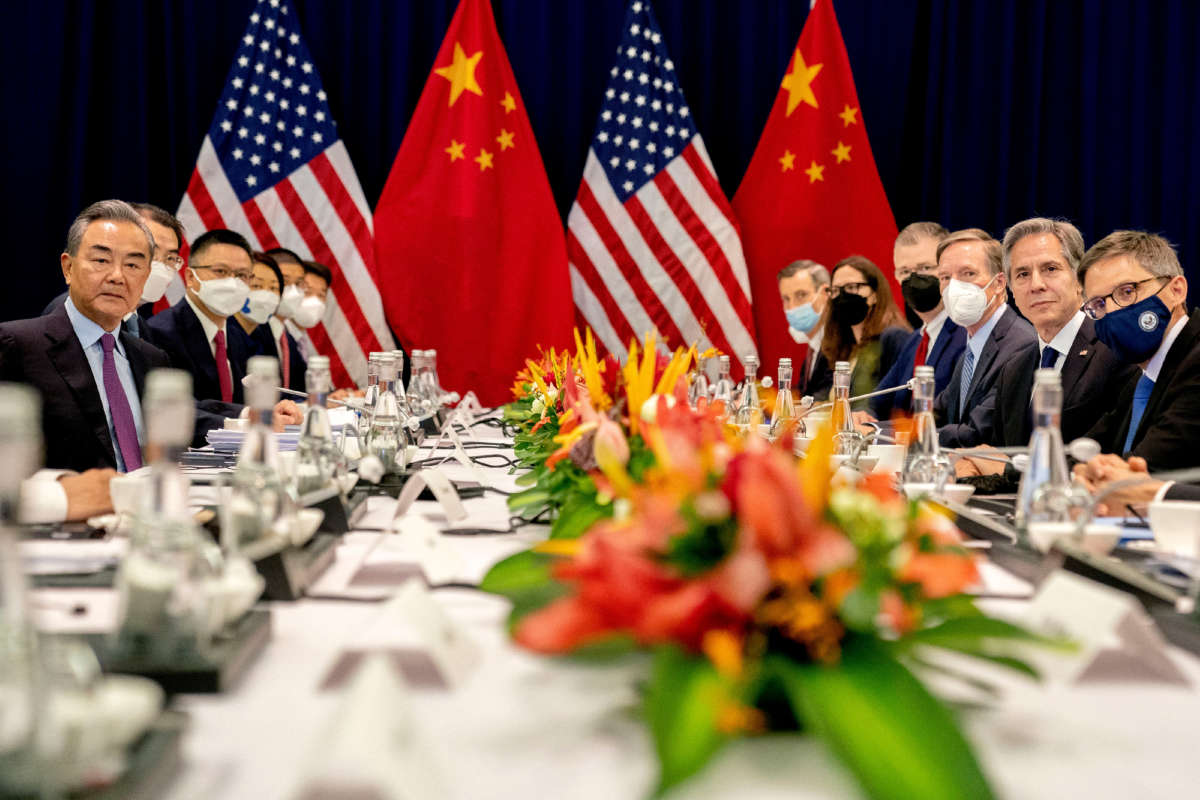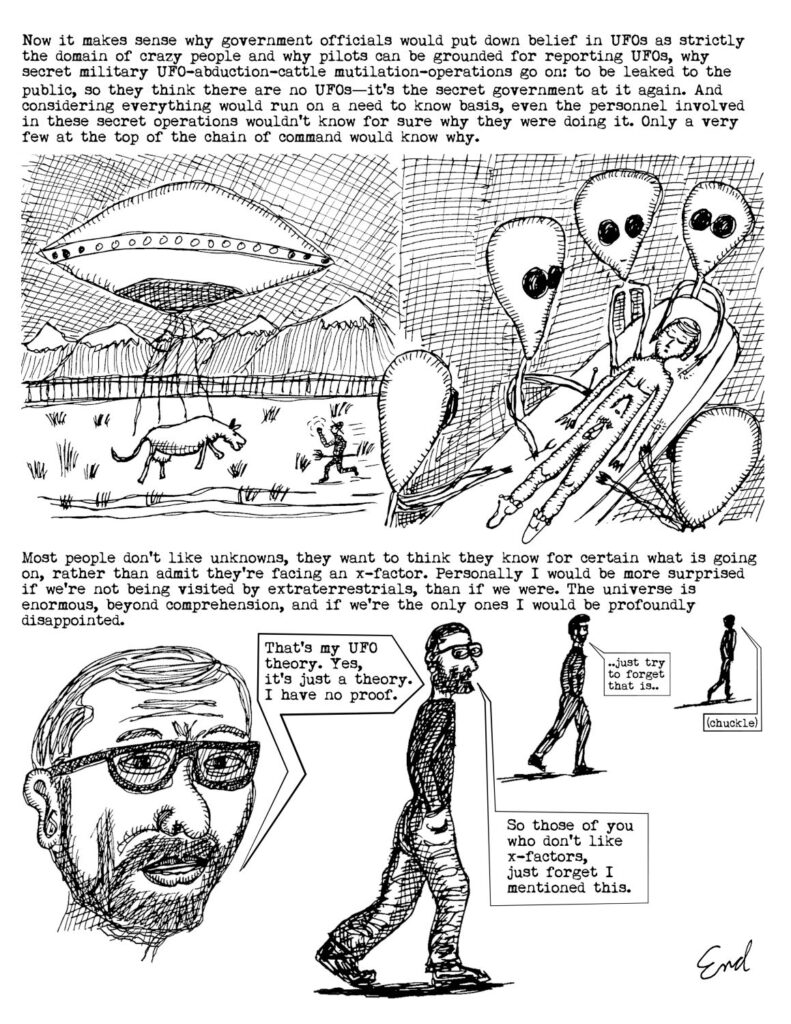— Samuel Beckett, Malone Dies, 1951
Those who are never lost are forever lost. Only those who know they are lost and that life is a shipwreck have a chance to find their way to shore.
The world’s great religions, including Taoism and Existential philosophy, understand that at the heart of human existence is the presence of the not (death, emptiness, void), but this negative reality, this “nothingness” interpenetrates with the positive of being alive so that our knowledge coincides with our ignorance, our lives with our death, and our truth with untruth. This is also common sense.
Everyone is a pilgrim on the way, and because there are no maps, we all get lost. And it is only by getting lost in a deep sense that we can find ourselves and discover the truth about the world.
It is well known that Ernest Hemingway made famous the phrase “the lost generation” when he opened his novel The Sun Also Rises with the epigram “You are all a lost generation,” attributed to Gertrude Stein, who said she heard it from a garage owner who said it about a young auto mechanic in his employ.
It is less well known that Hemingway later wrote “that all generations were lost by something and always had been and always would be …But to hell with her lost-generation talk and all the dirty easy labels.”
He was thinking of how the madness of war with the calls to patriotism and God and country and the never-ending official lies about everything maimed people at very deep levels. His words in A Farewell to Arms have lasted because they are so true in their dismissal of abstract obscenities and their embrace of the concrete:
I was always embarrassed by the words sacred, glorious, and sacrifice and the expression in vain …. And I had seen nothing sacred, and the things that were glorious had no glory and the sacrifices were like the stockyards of Chicago if nothing were done with the meat except to bury it …. Abstract words such as glory, honor, courage, or hallow were obscene beside the concrete names of villages, the numbers of roads, the names of rivers, the numbers of regiments and the dates.
No doubt he was also thinking of the existential anxiety of being alive and the fear of death and nothingness that is conveyed in his powerful short story, “A Clean Well-Lighted Place” that appeared in the 1930 volume Winner Take Nothing. He was well acquainted with nothing (the not, nada) and knew that social circumstances only add to it, particularly wars and the nihilistic death wishes of lying political leaders.
Some say nothing has changed for millennia and that every age is similar and people are the same, always complaining about the present and recalling the good old days. There is some truth in this, but the issue of assessing today in all its uniqueness remains paramount. For every age and every generation is different; therein lies its potential and dangers. Each can only be understood within its place and time. We live in the era of high technology that has never before existed. It is unique. And it is uniquely dangerous.
Today is a time of unprecedented official lies about everything, endless wars hot and cold, class wars of the rich against the poor, medical wars of international elites against everyone, etc. – it is a daily electronic digital barrage meant to pound people into the deepest despair. Call it “The Lost World of the Information Superhighway.” These lies have sown a vast sense of bewilderment, as intended. Lostness for so many, including those who don’t know it and take those lies for truth. People who don’t know that there are still places, although they are shrinking, where truth can be found. The problem is, of course, that even when they are told about media sites and writers that operate honestly and outside the propaganda mill, they usually refuse to go there. They prefer to live inside what Jim Garrison, the former New Orleans District Attorney who brought the only trial in the assassination of President Kennedy, correctly termed “the Doll’s House.”
Picking through the bins at the lost and found on the Internet, which is dominated by intelligence services and their Silicon Valley big tech partners, many who feel lost find “things” they think they have lost but which are counterfeit. They cling to them as to false gods, not realizing that they have been placed there by the elite mountebanks and their accomplices, a process similar to a document dump that contains fabricated records. It is an old trick. Often what is really lost is the sense that life makes sense and is meaningful, but this awareness is often replaced with shards of false reassurance meant to distract and far too much information for anyone to comprehend.
What’s up? Check your cell phone and head down the primrose path to unreality.
Just as there are two senses to being lost, one based on the awareness that if we refuse to grasp at straws and proceed through life by faith, the unknown road will bear us up. Thoreau said, “How vigilant we are! determined not to live by faith if we can avoid it…”, and the other being the more socially induced one of incessant propaganda, so too there are two ways of thinking about nothing. The existential sense as described by Hemingway in his famous story mentioned above, and the sense of trivia or superficial preoccupations that distract. C.S. Lewis described the latter sense very well:
The Christians describe the enemy as one ‘without whom Nothing is strong’. And Nothing is very strong: strong enough to steal away a man’s best years not in sweet sins but in a dreary flickering of the mind over it knows not what and knows not why, in the gratification of curiosities so feeble that the man is only half aware of them, in drumming of fingers and kicking of heels, in whistling tunes that he does not like, or in the long dim labyrinth of reveries that have not even lust or ambition to give them relish, but which, once chance association has started them, the creature is too weak and fuddled to shake off.
This is a perfect description of the passivity of scrolling the internet or social media. Much ado about absolutely nothing but distractions. Tranquilized by trivia.
Our current situation has been long in coming. Back in the early 1960s, there was a highly touted intellectual named Marshall McLuhan whose 1964 book, Understanding Media: The Extensions of Man, was gobbled up by the baby boomers raised on television, whose rebellious members protested the inhumanity of IBM computer technology of that time. Ironically, it was members of this generation who later created the computer revolution and have promoted the digital revolution. They carry cell phones as sidearms to defend themselves from reality.
Newsweek called McLuhan “the oracle of the New Communications.” He was an obscurantic celebrator of the electronic media and retribalized man long before the Internet, cell phones, personal computers, and digital mania. McLuhan’s paeans to technology sounded very profound and liberating with their vaguely Gnostic and Jungian rhetoric, which also fit with the 1960s “vibes.” He called the electronic media our gods whom we must serve, for they in turn would liberate us. He gave life to things while taking it from persons. He wrote:
Electromagnetic technology requires utter human docility and quiescence of meditation such as befits an organism that now wears its brain outside its skull and its nerves outside its hide. Man must serve his electronic technology with the same servo-mechanistic fidelity with which he served his coracle, his canoe, his typography, and all other extensions of his physical organs. But there is this difference, that previous technologies were partial and fragmentary, and the electric is total and inclusive. An external consensus or conscience is now as necessary as private consciousness. [my emphases]
Clearly this was a message of a prescient religious crank: mystical, mythological, technological nonsense perfectly in tune with the dawning new age. Not any coming of the Age of Aquarius, however, but that of the Age of Digital Control and endless wars.
By turning the person inside out and giving life to things, McLuhan was certainly anticipating and promoting the developments of the past forty years. His ideas gave legitimacy to the passivity of the person in the face of the burgeoning mass media consumer culture. They supported the growing commodification of all aspects of life, especially people. By externalizing the person, McLuhan was eliminating the idea of the autonomous self and opening the way for today’s era of consumers, blank screens for the reception of advertising, public relations, and propaganda on a vast scale. In fact, what he wrote of television runs deeper for cell phones and computer screens. “ … with TV,” he wrote, “the viewer is the screen. He is bombarded with light impulses that James Joyce called the ‘Charge of the Light Brigade’ that imbues his ‘soulskin with subconscious inklings.’ “
Inklings of abstract obscenities at war with the lost world of reality.
While many people sense this, they still embrace their killers, feeling that they would be lost without them. They have become appendages of their electronic appendages. The current push to transform all person-to-person life into a digital one run by Artificial Intelligence (AI) technologies with its mass surveillance powers is recognized by many but dismissed as a weird conspiracy. This is so far from the truth. A good indicator of this nonchalant attitude toward such developing trends is the vastly increased popularity of on-line shopping. Its innocence conceals the future that is coming.
I recently won a very high-tech looking electric toothbrush at the dentist. When I opened it, I discovered it contained a gadget with a suction cup that could hold a “smart phone” that you could attach to the mirror. The phone could electronically be linked to the toothbrush and it would monitor your brushing as you watched yourself brush. Poor me, I felt so stupid: a man without a smart phone!
While everybody knows that the boat is leaking and the captain lied, to paraphrase Leonard Cohen, such knowledge is abstract. It is a sort-of knowledge, sensed but also denied. Real but unreal. Known but unknown. And that’s how it goes. It is very difficult for many conventional people to admit that the life they have known is disappearing while they dawdle in fantasy land, believing the propaganda of their rulers. To live in the U.S.A. is to live in Neverland where no one ever has to be alone, never grow up, and always be “in touch” through the ether. It is a country of lost children.
You can choose any issue of importance and its official explanation is certain to be untrue, obvious or subtle propaganda. The lies about Ukraine and Russia; Covid-19, lockdowns, and vaccines; China and Taiwan; U.S. forces in Syria and U.S. support for Israeli aggression against Syria and the Palestinians; its support for Saudi Arabia’s ruthless policies and war against Yemen; the economy, central banking, and inflation; the increasing censorship of dissident voices; digital IDs, digital programmable currencies, and social credit systems; the persecution of Julian Assange; the Great Reset; a series of binaries meant to suggest false alternatives, etc. The list is endless. All official lies to support a sinking ship captained by psychopathic liars seemingly intent on a world war that will destroy the world. Melville’s Captain Ahab writ large. Like those traveling on the Titanic, today’s passengers on the flailing American empire’s Good Ship Lollipop are in for a surprise, and it won’t be a sweet trip to a candy shop.
Hemingway was surely right that “Winner Take Nothing.” Yet losers also exit empty-handed. Everybody knows this but goes on surrounding themselves with stuff, lots of things. Hoarders are a popular TV subject because they represent the extreme form of this madcap method of trying to secure oneself from loss. It is a form of mental and spiritual despair that could only exist in advanced capitalist consumer society. Too many possessions and too much information. Cluttered minds, cluttered abodes. There is a reason why the world’s poor are called the dispossessed. One could say hoarders are the possessed, and it is a form of demonic possession.
Recently I was called upon to help a hospitalized elderly relative by checking on her house. The house is filled from attic to basement, in every nook and cranny, with collected things that serve no life purpose but were kept to provide a security blanket that was really a strangulation cord. I will spare you the details, except to say that this relative is an intelligent woman, as was her deceased husband, and yet they surrounded themselves with so much “stuff,” never threw things out, kept papers from 70 years ago, old keys and coins, empty jewelry boxes by the score, etc. An overwhelming scene to behold. And why did they do this? Because they thought they were protecting themselves against loss, against nothing, nada.
As T. S. Eliot wrote in The Wasteland: “These fragments I have shored against my ruins.” But there is nothing that will protect against the loss Eliot was referring to – the social, psychological, and spiritual fragmentation of Europe as a result of World War I. A wasteland created by politicians. Like today.
We too are now living in a wasteland, and the only way to find our way forward is to acknowledge that we are lost and to jettison the false security of believing the vast tapestry of lies promulgated by the captains of the American-led Titanic.
I often think of the words of the poet Rilke as good advice, a step in the right direction where there is a lost and found worth visiting and insights await us. While primarily writing about the artist who time and again is that someone who emerges from the crowd and whose “winged heart everywhere beats against the walls of their time,” I think his words apply to every person, including journalists. To plumb the depths of our sordid current world demands aesthetic, political, and spiritual resistance rooted in the open sociological imagination, a willingness to go wherever the facts and intuition leads us. Rilke said:
Not any self-control or self-limitation for the sake of specific ends, but rather a carefree letting go of oneself; not caution, but rather a wise blindness; not working to acquire silent, slowly increasing possessions, but rather a continuous squandering of all perishable values. This way of being has something naïve and instinctive about it, and resembles that period of the unconscious best characterized by a joyous confidence, namely the period of childhood …. [the child] has no anxiety about losing things …. And whatever he has once been lit up in love remains as an image, never more to be lost, and the image is possession; that is why children are so rich.
For a country of lost children, this is a good place to start.


 ISRAELI PRIME MINISTER YAIR LAPID MAKING A PUBLIC STATEMENT REGARDING THE ISRAELI ATTACK ON GAZA, ON AUGUST 5, 2022. (PHOTO BY GPO VIA APA IMAGES)
ISRAELI PRIME MINISTER YAIR LAPID MAKING A PUBLIC STATEMENT REGARDING THE ISRAELI ATTACK ON GAZA, ON AUGUST 5, 2022. (PHOTO BY GPO VIA APA IMAGES)






